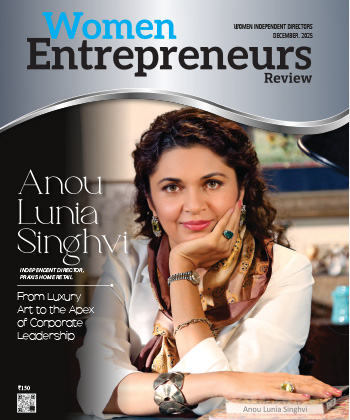
Leading New Age Businesses: Mindset Shifts Required in Leaders
By: Divya Amarnath, Senior Director & Head, HR New Businesses, Flipkart
Divya Amarnath is a dynamic leader with diverse experience in HR, IR/ER, Sales, Marketing, and Product management. She has a proven track record of rapid growth and recipient of the prestigious Economic Times Young Leader Title in 2017.
“Change is the only constant”- This is the cliched statement we all keep hearing. However, the rate at which the change is happening in the world around us is only accelerating with each passing day. For Millennials like me, I think the rate of change has been the highest over the last decade as compared to any other time preceding that. We live in the world of apps- Food, ride-hailing, and social media today and it makes me wonder how I survived without these till 2010 when most of these were not available. This makes me think that for future generations this RoC (Rate of change) is only going to increase. When as individuals we can feel this change, imagine the implications of this to the overall macro-economic, social, and industrial landscape.
The Scholars have already described that the world is moving from VUCA (Volatile, Uncertain, Complex, and Ambiguous) to BANI (Brittle, Anxious. Non-Linear, Incomprehensible). For the unversed VUCA was the term coined in the 1990s and BANI in 2020. The VUCA concept has long been used to describe the volatility that has become the norm in the business world. However, the BANI model goes a step further and helps companies consider the chaotic and completely unpredictable impacts that can have a major impact on their operations. This shift testifies to the increase in entropy in the world around us thereby calling for a shift in leadership mindsets.
In the VUCA world, over the past 30 years, the organizations focussed on creating structures, and systems to be agile and responsive to external changes/volatility. The focus was very strongly laid on structure, process, and systems. However, events like COVID completely disrupted this and brought the focus on something more fundamental: The humans.
Human resilience surpassed the fragility of structure; Human adaptability surpassed agile processes and systems; Human native intelligence and life skills helped find solutions to combat one of the biggest crises our generation has ever seen. Similarly, the organizations with leadership who imbibed these qualities thrived much better than the others. Leaders who could demonstrate empathy, resilience, and creativity to solve unprecedented problems emerged as winners.
To build truly resilient organizations, the new age leadership must demonstrate hands-on problem solving, learn new skills, and be ready to fail without being worried about the public perceptions /image. Only then, will they be able to inspire everyone in the organization to explore, take risks, and pursue indigenous problem-solving that will generate access to collective intelligence to combat the non-linearity. A few leadership practices that can come in handy while enabling this shift are as below:
- Operating in short cycles of decision, action, and learning
- Failing fast, Iterating and Pivoting
- Engaging and leading people, taking them along, and creating excitement around the ongoing change.
If we look at this, this is exactly what successful entrepreneurs do. In summary, we can say that with the changing macro-dynamics, the entrepreneurial DNA will no longer just be good to have for business leaders. Gone are the days when the leadership could sustain their titles through rank and file on the back of well-established systems and processes. The world we live in today, calls for the entrepreneurial characteristics in the leadership to build sustainable thriving businesses. We have a live example of how a tech giant like Microsoft achieved this by “hitting refresh”. On that note, I would like to conclude with a quote by Satya Nadella from his book “Hit Refresh”: “Our industry does not respect tradition. What it respects is innovation.”
Most Viewed
- 1 Women's Health Startup HerMD Closing Doors Amid Industry Challenges
- 2 5 Famous Women in Indian Armed Forces
- 3 Saudi Women No longer Require Male Permission for Clothing Choices, says Prince MbS
- 4 Kolkata Medtech Startup Innovodigm Raises Rs 5.5 Crore Seed Funding Led by IAN Group
- 5 Yamunanagar's Kashish Kalra Honoured after Securing 111th Rank in UPSC Civil Services Exam
- 6 Madurai Appoints Its First Woman Corporation Head
- 7 IAS Vijayalakshmi Bidari Appointed as the new Nagpur Divisional Commissioner
- 8 American Entrepreneur Lucy Guo Overtakes T Swift to become Youngest Female Billionaire
- 9 ICC Women's World Cup 2025 Trophy Showcased at Indore's Holkar Stadium
- 10 Aparna Saxena's Beauty Venture AntiNorm Launches in India
- 11 Vidya Nataraj Co-Founded BlueStone Jewellery & Lifestyle files IPO
- 12 5 Women Freedom Fighters of India
- 13 Dr. G Krishnapriya appointed as CEO for Trichy
- 14 M3M & Sirona Partner to Introduce Menstrual Hygiene Vending Machines in 15 Locations
- 15 Punjab Govt launches SHE Cohort 3.0 Supporting Tech-led Women Startups
- 16 Indian origin Lawyer, Sweena Pannu appointed as the US New Superior Court Judge
- 17 The Aurora Tech Award recognizes 4 Indian Women-led Startups
- 18 Kerala's Republic Day parade featured an all-female tableau
- 19 Manisha Kabbur Becomes Karnataka's First Woman International Karate Coach
- 20 Director K. S. Ravikumar's Daughter Maalica Ravikumar Launches Life Coaching Company 'Evergrowth Academy' for Women
- 21 Leezu's Raises Pre-Seed Funding to Accelerate Growth in Sexual Wellness Industry
- 22 Sattu: Super-easy summer drink for PCOS gut healing
- 23 Swathi Nelabhatla creates Sitha App, India's First Women-Exclusive Gig Platform
- 24 7 Timeless Female Kathak Dancers & their Iconic Legacies
- 25 Meet 7 Iconic Women Architects of Modern India & their Most Impactful Work
- 26 This Woman-led Insuretech Startup is Helping Bridge the Education Financing Gap in India
- 27 Women Leaders Share Lessons Learnt from India Women's WC Win
- 28 5 Enterprising Women Founders Powering Singapore's Tech & Innovation Landscape
- 29 4 Women. 4 Stories. One Vision for Smarter, Stronger Healthcare
- 30 Global Gender Gap Narrows to 68.8%, But Full Equality 123 Years Away: WEF Report 2025
- 31 Changemakers: 7 Women Entrepreneurs Taking the Make in India Movement Forward
- 32 Meet Lucy Guo, The Youngest Self-Made Female Billionaire Disrupting Tech
- 33 How Women are Driving India's Festive Online Shopping Surge






